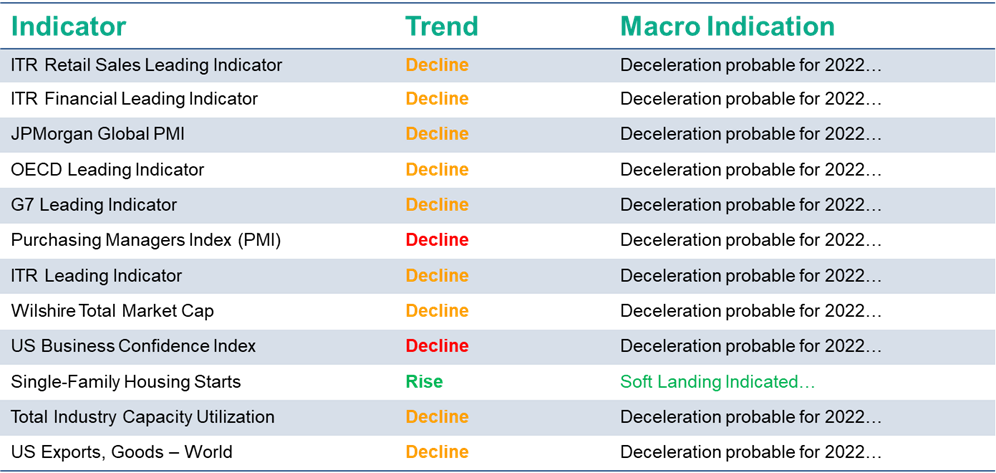I am always interested in broad, slowly-developing trends because they can be overlooked if you don’t pay attention — frog-boiling stuff (though that metaphor is actually an urban myth). The trend on my mind concerns how to think about the size of your customers and, while mainly relevant in the B2B space, it should be of interest to anybody in B2C too. My 34th Year II Playing to Win/Practitioner Insights (PTW/PI) piece is Small is Beautiful: Why You Need to Pay More Attention to Small Customers. You can find the previous 86 PTW/PI here.
Framing the Question
The title, by the way, is an homage to a 1973 book by economist E.F. Schumacher entitled Small is Beautiful: A Study of Economics as if People Mattered. Schumacher took a critical look at that era’s fascination (if not obsession) with huge economic development projects, like Egypt’s Aswan Dam. He pointed out that these megaprojects were so expensive and served so few needy people that the rich nations funding them would never achieve their goals of helping needy populations in the less developed countries because the investment cost per beneficiary was so high. Instead, he encouraged the creation of smaller-scale economic development models with more favorable cost-per-beneficiary dynamics that would enable the assistance to reach a much broader proportion of people currently living in poverty.
I hope it becomes clear why I gave a tip of the cap to Schumacher’s classic. I am going to make an analogous argument about the relative attractiveness of big vs small customers. But that argument requires us to take the long view — the very long view.
First Wave: Circa 1960 to 2000
The Post-War period, especially the period from 1960 to the end of the 20th century, was the era of the development of the gigantic company, especially in America which didn’t have its productive infrastructure severely damaged during WWII, as did Europe and Japan, and was able to get into a big growth mode earlier than companies from Europe and Japan.
The poster child for the emergence of the gigantic modern company was General Motors (GM), which was the biggest private sector company on the planet at a revenue of $11 billion in 1960. To be fair, that equates to $80 billion in 2022 dollars, but even that sum would put the 1960 GM outside the 2021 Fortune 100 — so in today’s terms, definitively not a gigantic company. But it was $24 billion by 1970, $58 billion by 1980, $127 billion by 1990, and $189 billion by 2000. The world’s biggest company grew by over 17 times during the final four decades of the 20th century.
And GM wasn’t alone. This was the time of going national, going global, and getting gigantic.
In this era, the key to B2B success was getting one (or more) of these gigantifying companies as a customer and then serving it (them) well. Do anything for it — customize the offering, perform specialized R&D for it, take them on boondoggles. Do anything because they were everything. It was smart. These customers had big and growing demand and were often the most profitable in their industries. And if these customers were smart, they cared about security of supply because above all else, they needed security of supply to underpin their growth.
If a supplier couldn’t or wouldn’t ensure that supply, it was replaced. Lamb Weston was the biggest frozen french fry producer in the US and was McDonald’s principal supplier when McDonald’s asked it to support its globalization by building capacity in its international locations. Lamb Weston said, “no thanks,” so McDonalds went to a tiny private company in rural East Coast Canada — McCain’s — who said, “sure thing,” and went on to become the world’s largest frozen french fry company on the back of its McDonald’s global relationship.
McCain’s was smart: focus on a big customer and do whatever it asks — regardless. Your biggest customers were likely to be your most profitable and fastest growing customers.
Current Wave: Circa 2000 to 2025
Then around 2000, everything changed. The timing depended on the company and industry in question — but it changed. Growth slowed for many of the big companies — in part because they had already gotten big. And they started noticing that they were making their suppliers rich — like the McCain brothers, or Frank Stronach, who became a billionaire with his Magna International serving the auto OEMs, and countless more examples.
Those big customers reacted and began an effort, that continues to this day, to grind down their suppliers. They created corporate procurement departments, served by procurement consultants, that agglomerated spend pools, and generally had the goal of getting for less whatever they were currently getting. Their suppliers got used to more demands at lower prices. It wasn’t such a terrific game anymore.
Amex-Costco provides an object lesson. The two companies entered a long-term partnership in 1999 by which Amex became the exclusive credit card for Costco. By pretty much everyone’s definition, it was a huge success for both companies — it helped both companies profitably grow their businesses.
But when the original deal came up for renewal in 2015, Costco competitively bid out the agreement, with the bidding getting so intensely competitive that Amex dropped out before the final round, which was won by Citibank/Visa. Most analysts viewed the pricing of the final deal as so favorable to Costco that it was hard to see how Citibank/Visa would ever make a positive return on the deal.
While in the earlier era, Amex made great profits and showed fabulous growth from its large corporate accounts, including Costco, where is its attractive B2B business now? It is with Small & Medium-sized Enterprises (SME), where Amex can add lots of value to its customers by providing data that helps their customers increase their marketing/selling effectiveness and in lending to them to finance their growth. Amex’s “we help small business do more business” is one of my favorite tag lines.
This is the typical dynamic in the modern era. There is full price/value discovery, and the goal of big customers is to grind down suppliers to cost plus as tiny a margin as possible through relentless shopping and negotiation. Smaller customers, on the other hand, are more inclined to buy an offer that meaningfully helps them “do more business.”
The problem is that most B2B companies are still in the mode of thinking that big customers are the most important — the key to both growth and profitability. Hence, they still spare no expense to serve them and put their best sales resources against them. However, though they might expect gratitude in return, they get nothing of the sort. Big customers grind down their suppliers and provide zero rewards for the extra resources that suppliers dedicate to them.
Meanwhile, these B2B companies underinvest in SME customers because they think of them as less important than their big customers. It is not unlike the current balance of investment between traditional advertising (i.e., television, magazine, newspaper and outdoor) and digital advertising. Investment in traditional advertising is still way too high relative to digital advertising just because it takes a long time to shift from traditional practices.
The era of big customers mainly being high growth and high profit is over, but the marketing and selling models are taking a long time to adjust to a world in which SME customers are in general more promising in terms of growth and profitability.
Next Wave: Circa 2025 — ?
I think the next wave will feature two dynamics. First, B2B companies will figure out that big customers are not good for them and will make the transition to aligning their R&D efforts and their best sales assets behind SME customers. Second, big customers are going to figure out that divorcing procurement from strategy and giving their procurement functions untrammeled authority to abuse suppliers isn’t a free lunch. When big customers figure out that suppliers have stopped investing in them and have their attention focused on other customers — their smaller competitors, in fact — they will shift to a more strategically sound approach.
Practitioner Insights
Suppliers need to strip down the costs of serving big customers. It is a black hole. Serve them enthusiastically and well — just in a stripped-down fashion. Think Southwest Airlines. They are always nice and cheery and try to help you have an enjoyable flight. They give no impression whatsoever that they aren’t interested in you as a customer, because they most certainly are. But they encourage you to book online and don’t give you any extras for free. They draw the line at anything that costs them substantially.
You should too. Think of your big customers not as profit engines but rather your baseload volume. Their role is to help you achieve scale economies so that you can make attractive margins on your smaller customers. They are still important and you can’t turn you back on them. You need to strip out your costs so that you can serve them at minimal margins. For example, try to get them to buy online from you to minimize selling costs. Don’t try to get them to appreciate and pay a price for the special things you do for them — they won’t. But trying to achieve higher prices with them can jeopardize your business with them. Just don’t do any special things for them. The procurement function doesn’t do a single special thing for you, so don’t delude yourself into thinking there will be any sense of reciprocity.
At the same time, figure out what smaller customers value most, deliver it, and charge for it. Don’t overcharge, but make sure you deliver value and charge for it. Put your best resources on the task of serving smaller customers brilliantly. Innovate for them and seek to achieve disproportionate market share with them. And perhaps more importantly, help them win against their bigger competitors (who are your big customers) to shift your sales mix toward companies that value your investment to serve them.
Eventually big customers are going to wake up and realize that corporate procurement isn’t a free lunch, and that the pendulum has swung too far. But it will take some time. Corporate procurement executives and consultants are too powerful and typically operate with overly narrow goals, which they pursue vigorously regardless of the damage they do to supplier relationships.
But the smartest big customers should take notice of the shift of leading suppliers toward preferential treatment of their smaller competitors and swing the pendulum back toward more strategic procurement that seeks to balance desire for low price of supply with encouragement of their suppliers to return to investing in the success of their big customers.
I suspect, however, that it is going to take another decade or so for that to be understood by both big customers and their suppliers — which provides a competitive opportunity for the cleverest in both categories.


